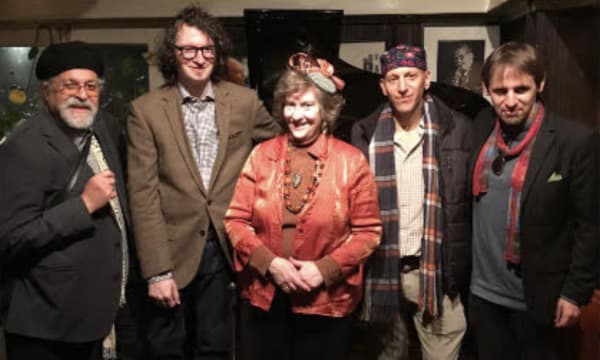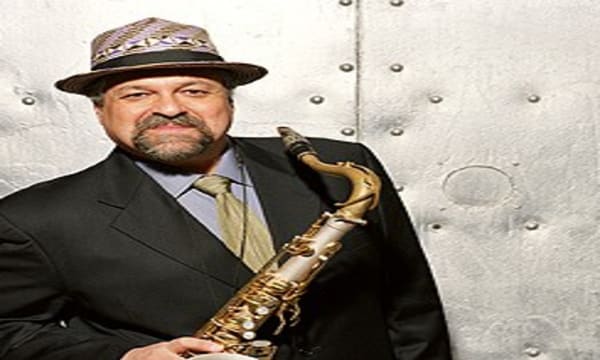Joseph Salvatore Lovano was born in Cleveland, Ohio on December 29, 1952 and grew up in a very musical household. His dad, Tony, aka Big T, was a barber by day and a big-toned tenor player at night. �Big T,� along with his brothers Nick and Joe, other tenor players, and Carl, a bebop trumpeter, made sure Joe�s exposure to Jazz and the saxophone were early and constant.Joe�s mom, Josephine, and her sister Rose were serious listeners, as well, His Mom remembers hearing Big T play opposite Stan Getz and Flip Phillips when they were engaged. And Aunt Rose went to hear Jazz at the Philharmonic with Ella Fitzgerald when they came through Cleveland.Not surprisingly, Joe began playing the alto at five, switching to the tenor a few years later. By the time he got his driver�s license at sixteen, Joe Lovano was a member of the Musician�s Union, Local 4, and working professionally. He started playing club dates (sometimes subbing for his dad), and Motown cover bands, eventually saving enough money from these gigs to put himself through college. "My dad was a fantastic saxophone player with a really deep passion for the music. I grew up with his record collection and when I was a teenager, he'd bring me around to rehearsals and jam sessions.After high school, Joe attended Berklee and his college years were pivotal, a precursor of future collaborations and career opportunities. Joe had been searching for a way to incorporate the fire and spirituality of late-period John Coltrane into more traditional settings and at Berklee, he found it, discovering modal harmony."My training was all bebop, and suddenly there were these open forms with deceptive resolutions. That turned me on, the combination of that sound and what I came in there with. I knew what I wanted to work on after that."During his Boston years, Joe was part of a vibrant scene, always jamming and meeting new musicians, something he has done his entire life. To finance his education, he continued working club dates and other assorted gigs, including an organ trio engagement he shared with future Nonet member George Garzone down in Boston�s combat zone.His Berklee instructors also played a key role in his development, including Herb Pomeroy, who led the big band, Joe Viola, head of the saxophone department, Andy McGee, a saxophone teacher renown for his advanced improvisation concepts, the inspiring improvisation instructor John LaPorta, and Gary Burton. Joe was in Burton�s number one ensemble during the vibist�s first semester on the faculty at Berklee.Twenty years later, Joe Lovano was the recipient of a Distinguished Alumni Award from Berklee and an honorary doctorate in 1998. Berklee also awarded Joe its first endowed chair, The Gary Burton Chair for Jazz Performance in 2001.Joe's Master Class DVD "Jazz Improvisation" was produced by the Berklee Press In 2003, Joe created an educational DVD for the Berklee Press: Listen to Joe Lovano Left Behind from From The Soul (Blue Note - 1991)Joe Lovano and Dr. Lonnie SmithPost-Berklee, after six weeks on the road backing Tom Jones, Joe returned to Cleveland. With his reputation ascending, he soon got the call from Dr. Lonnie Smith, who was living in Detroit at the time. Joe joined the organist for a series of gigs in the Motor City, as well touring on the Chitlin circuit in 1974.A six month tenure with Brother Jack McDuff and the Heating System was next. The album Joe recorded with Dr. Lonnie Smith, Afrodesia, started getting a lot of airplay on Jazz radio across the country at that same time, resulting some early name recognition when Joe worked new clubs with McDuff."I was used to being in a multicultural world, playing with my dad and his bands, so when I started working the Chitlin circuit with Lonnie, I was pretty much the only white cat in the club. In this music, you�re on testing ground all the time, and every time you come through it into the sunshine, you stand taller.�Eventually, the group played New York, the real Jazz proving grounds, for Joe�s first Carnegie Hall gig, and in Harlem, at the Club Barron. Playing in New York was so intoxicating that Joe moved to Manhattan. He began sitting in with friends, and ended up working with Chet Baker at Stryker�s, and Albert Daley at Folk City, as well as sitting in with Rashied Ali at his club, Ali�s Alley. The city was a hotbed of music at the time, with a flourishing loft scene at Sam River�s Studio Rivbea, and Ladies Fort, and an exciting lineup at the lower east side club, the Tin Palace.A few months after he relocated to New York, Joe joined Woody Herman�s 40th Anniversary tour in 1976, which included "The 40th Anniversary Concert" at Carnegie Hall. For his second Carnegie Hall appearance, Joe shared the stage with Stan Getz on the classic Early Autumn, and was a featured soloist during the celebration, along with Frank Tiberi, Zoot Sims, Al Cohn, Jimmy Guiffre and Flip Phillips. The importance of the event was not lost on Joe�s sister, Laura, and his Aunt Rose, who traveled from Cleveland for the gig.After nearly three years on the road with Woody, Joe decided it was time to move on. He returned to New York, moving into a Chelsea loft that would be his home for the next twenty years. Thanks to his travels and playing experiences, he had already developed a network of great musicians. He began playing gigs, jamming, and playing with some of the best musicians on the planet. One of his musical collaborators was vocalist/dancer Judi Silvano.In addition to his work with Woody and Mel, Joe also played in other large ensembles with Carla Bley, Bob Brookmeyer, Charlie Haden�s Liberation Music Orchestra and Gunther Schuller. These experiences served as the catlyst for creating his own musical environments utilzing larger ensembles, including his current Nonet.Weblinks:www.joelovano.com


